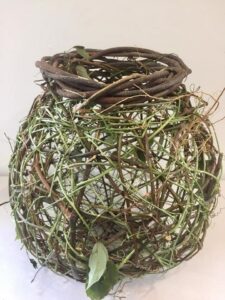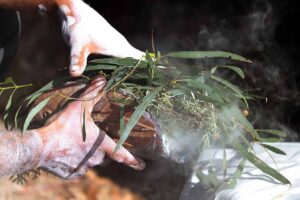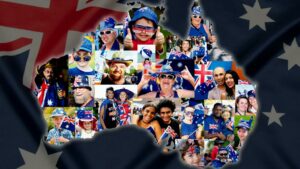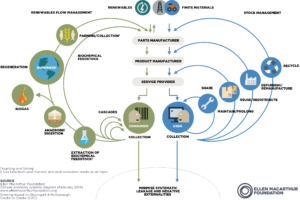INTERCONNECTION
In 2020, after the mega Gosper Fire had raged through the Blue Mountains, I met up with Dharug man, Chris Tobin, at his bush camp at Bell to talk about Caring for Country and the fires. Chris told me how the fires had raged through here where we sat and talked, but miraculously had burnt all around his little tent without touching it. His little camp is a form of illegal squatting as, like many First Nations people, he doesn’t have any rights on this land. It’s either privately owned or government owned (National Park). But Chris has a little camp here where he sits and yarns with people over a cuppa. He said he has come to realise that if he doesn’t visit, he can feel the country is lonely. This accords wth what Indigenous Rangers say: “country needs people“, the name of their charity through which they are seeking donations. So far they are funded by the Federal Government’s Working on Country program, but they urgently need to expand this program which is offering real jobs to First Nations people to continue their cultural obligation to ‘care for Country’.
The narrative of interconnection tells us that we are intimately interconnected with nature, with all life, with each other, in a state of ‘interbeing’ – as a part of it, not separate from it. It has been around for thousands of years and is still carried by many cultures, particularly indigenous ones, some of whom are the last defenders of the remaining places on our planet where rich biodiversity survives ‘civilisation’. It is also the story of my own Buddhist journey—the truth of the interdependent nature of all phenomena, both physical and mental—the dance of life.
We are one, but we are many
And from all the lands on Earth we come
We’ll share a dream and sing with one voice
I am, you are, we are Australian
Celebrated in song, dance and drumming by the ABC for their 90th anniversary, this song is not just for humans, but in the spirit of the deep meaning of Caring for Country, it is a song for all life forms—the animals, insects, birds, reptiles, sea creatures and plants and trees who are our family.
THE OLD STORY IS UNRAVELLING
When a significant proportion of the population report anxiety and depression, it can no longer be pathologised as an individual mental health problem.
It points to a psycho-spiritual problem in our culture about the mismatch between community expectations and lived experience of homelessness, income insecurity and climate anxiety. It points to the long term consequences of the Western tradition of human separation from and over nature, dating back to Plato and emphasised in the Genesis story whereby God created [only] man in his image and gave him dominion over Earth and all its lifeforms.
It points to the need for a new story about the meaning and purpose of life away from continuous economic growth creating increased material prosperity and secure incomes that was promised by neo-liberal economic thinking. The idea of Australia becoming a ‘Renewable Energy Superpower’ just continues the neo-economic liberal horror story —just with a different energy source but bereft of an ability to speak to our broken spirits. Just imagine our lands and oceans covered by solar panels and windfarms to feed the consumerist lifestyle! What will that do for biodiversity and ecosystems regeneration?
Climate change denialism no longer works when wholesale flooding has wiped out people’s homes in many rural and regional towns and when working people live in tents because they can’t find an affordable house to rent or buy.
For an increasing number of people the old story doesn’t ring true and so feeds anxiety and depression as well as conspiracy thinking. We see how this has played out in the tragic shooting of young police constables in Chinchilla, Qld, David Littleproud’s electorate no less.
People get pulled down the rabbit hole of conspiracy thinking when the dominant narrative about life told through mainstream media channels no longer speaks to them. At first they fall victim to Donald Trump style populism – we can turn back the clock if only we get rid of ‘the others’ and recapture a world where to be ‘white’ and ‘male’ meant you were ‘king’ of your ‘street’, and if only we can be ‘free’ of government that no longer speaks to and for us.
When the National and the Liberal Party pander to this story, they go down the same dead end rabbit hole no matter how hard Sky After Dark rattles the drum.
SO WHAT’S THE NEW STORY?
I’ve been trying to weave the threads of this together for some time as I look for a way to link the ancient wisdom insights of Australia’ First Nations people and their idea of LAW as ‘Caring for Country’, embedded in what modern science now recognises as the incontrovertible truth of the systems ecology that prescribes life on Planet Earth. Simon Mustoe’s Wildlife in the Balance: Why animals are humanity’s best hope (Wildiaries, 2022) is a marvellous overview of this story of total systems inter-connectedness that defies the simple cause-effect bias of the Western knowledge system and the narrow, short term frame of productivity that has shaped economic thinking.
BUT
How do we do embrace Australia’s ancient cultural tradition of Caring for Country as our foundation when the protocols of First Nations cultures preclude non-First Nations people who comprise 97 per cent Australia’s population from knowing the ‘stories’ of First Nations culture? These stories (of the Dreaming and Ancestral Beings) encode this ancient wisdom as eco-spiritual truths taught through ceremony in men’s business and women’s business by the Elders, the knowledge custodians of particular places, using the arts: dance, music, painting, metaphor and story telling. First Nations cultures in Australia do not use the abstracted generalisations/universalisms that characterise European knowledge systems. Only certain people have rights to certain knowledge.
How can the ‘rest of us’, particularly those of European cultural heritage whose knowledge systems and institutions ‘run the show’ even begin to step outside the bubble of our cultural dominance? A bubble that is far bigger that the famous Canberra Bubble, which houses our political and bureaucratic decision makers and Canberra Press Gallery commentariat?
THE WEAVERS OF THE NEW STORY
 Many people have been working on this. In particular I want to acknowledge the ground-breaking work of the Australian Earth Laws Alliance, the global Wellbeing Alliance (WEALL), the Uluru Dialogue, Regenerative Songlines Australia, Circular Australia, and the national organisation of Indigenous Rangers, Country Needs People. And the work of many local communities such as the Planetary Health Initiative of the Blue Mountains and many civil society organisations who work tirelessly in this space, especially noting the regenerative agriculture movement.
Many people have been working on this. In particular I want to acknowledge the ground-breaking work of the Australian Earth Laws Alliance, the global Wellbeing Alliance (WEALL), the Uluru Dialogue, Regenerative Songlines Australia, Circular Australia, and the national organisation of Indigenous Rangers, Country Needs People. And the work of many local communities such as the Planetary Health Initiative of the Blue Mountains and many civil society organisations who work tirelessly in this space, especially noting the regenerative agriculture movement.
I also want to acknowledge the work of the new Albanese Labor Government: the huge task of energy transition through renewables underway under Minister Bowen; the technology innovation work under Minister Husic; the Voice referendum leadership under Minister Burnley and her Indigenous colleagues; the new security thinking being pursued by Minister O’Neill; the Pacific Island partnership work through Minister Senator Wong; the nature and biodiversity conservation work of Minister Plibersek; the wellbeing focus on budget formulation by Treasurer Chalmers; the work of Minister Burke on redressing the power balance of the industrial relations system, and Susan Templeman, the Special Envoy for the Arts in developing a national cultural policy; and especially the consensus style leadership of Prime Minister Albanese who has never wavered in his commitment to genuine multiculturalism and recognition of Australia’s ancient First Nations cultural heritage as the foundation of our national identity.
And the crucial members of the cross bench who give the Government backbone in resisting the old neo-economic liberal elite and their media fog horns—the mining lobby, the old guard economists of the AFR, and the Australian, etc etc.
THE THREE PILLARS OF THE NEW STORY
Pulling insights from all these sources and the many threads of interconnection that link them to civil society initiatives around the world, I have identified the three pillars of Australia’s new story.
1. CARING FOR COUNTRY
As First Nations Elders continually remind us, the idea of Caring for Country is an all embracing idea that not only includes the landscape, waterways and ocean, but all their lifeforms and the spiritual stories and LAW that have kept its agency (spiritual power) alive through millennia.
This one idea in all its multiple levels of meaning and complexity encodes the meaning of Australia’s ancient cultural heritage, and links it to the modern idea of nature conservation, environmental restoration, regenerative agriculture, and preventing pollution through domestic, industrial and agricultural waste.
Caring for Country is an eco-spiritual idea that not only points to human responsibility for stewardship, but to a recognition of an entirely animated world replete with agency and spiritual presence.
Caring for Country points to the need to rapidly increase the funding of Indigenous rangers, linked to new approaches for managing bushfires, flooding, water management, agriculture and mining, including cultural sites protection and restitution
2. MULTICULTURALISM
Migration
Australia prides itself on being the world’s most successful multicultural nation, which has avoided the ethnic tensions of other nations in the face of recent waves of refugees and asylum seekers, particularly in Europe and the UK. As Noel Pearson’s 2022 Boyer Lectures point out, Australia as a nation is shaped by three waves: the 65,000+ history of First Nations; the 250+ years of white settlement that established the institutions of modern Australia, and the 103+ years of post WWI immigration from non-Anglo-Celtic countries, including the recent 50+ years from the non-European countries of Asia, the Middle East, Africa and the Pacific.
Celebrating Diversity
We have promoted multiculturalism through the Special Broadcasting Service and Indigenous broadcasting on radio, TV and other media, including live music, the performing arts, and the visual arts. Bodies such as Ethnic Communities Councils and others have promoted respect for different faith and cultural traditions. Government has protected multiculturalism through anti-discrimination legislation and campaigns against racism—although on this front we still have much to do. Ethnocentrism is when you think only your culture is in the right. Racism is when you take this idea to actively reject and cause harm to others based on their perceived racial/ethnic difference, or more insidiously, you watch passively while you see this happens to others and do not intervene, or worse, refuse to see and name it for what it is.
Overcoming the Colonial Legacy
People of European cultural heritage, particularly Anglo-Celtic, still dominate our institutions and leadership in business, government, culture and sport, but this is slowly changing and coming under increasing scrutiny and pressure for change.
However we have yet to invest in legal pluralism to accommodate First Nations traditional LAW and sharia law customs of people of Muslim faith, where they are consistent with human rights. We still have an over-representation of First Nations people in the criminal justice system that point to systemic issues of culture and prejudice in the logic and application of our criminal justice system. Might not the entwined incidences of youth suicide, domestic violence and ‘criminal’ behaviour in First Nations youth be signs of cultural alienation and exclusion, of deep intergenerational-epigenetic trauma—which requires cultural and spiritual healing, not incarceration. Might it not be a form of spontaneous cultural insurgency, an outpouring of rage, frustration and grief without any political vision to channel it?
This is also evident in our attitude to asylum seeker detention regimes—speaking to a colonial cultural hangover from Australia’s founding as a series of penal colonies
Our universities, as institutions of knowledge creation and generation, are still dominated by the Western knowledge system, with competing knowledge traditions hived off into culture and religion specialities, although we now have many Institutes of Indigenous Knowledge Systems and related research programs that are beginning to provide a basis for challenging this hegemony. It is a global movement of First Nations peoples in the face of the devastation visited on the Earth by so-called civilisation through imperialism and global capitalism whether with Western, Chinese, Russian or Indian characteristics.
The Gender Dimension
If we include the gender aspect of multiculturalism, recognising that women and men operate in a spectrum of gender influenced culture and expectations, we have also begun to address the full spectrum of gender discrimination, including domestic violence.
Acknowledging the gender dimension also includes same-sex intimate relationships, individual desire for a non-binary gender identity, and the reality of gender dysphoria and transgender identity. That this buts up against some established tenets of religious faith traditions cannot overrule the fundamental value of respecting diversity in all its forms as part of multiculturalism.
3. A WELLBEING CIRCULAR ECONOMY
Wellbeing
The move from a free-market neo-liberal economy to a wellbeing circular economy marks a fundamental transition in our economic thinking, industrial policy and regulation, our approach to wealth creation and distribution, and to health, housing and social services. I takes Treasurer Jim Chalmers discussion about values-based capitalism a step further into the fundamental redesign of our industrial production, transport and consumption system.
A wellbeing economy is defined as a mixed economy (public, private, NFP) where all people feel secure in their basic comforts and can use their creative energies to support the flourishing of all life on this planet. Where we thrive in a restored, safe, and vibrant natural environment because we have learned to give back as much as we are given. A world where we have a voice over our collective destiny and find belonging, meaning and purpose through genuine connection to the people and planet that sustain us (WEALL).
Instead of relying on the traditional measure of GDP, a wellbeing budget must establish and measure performance against wellbeing targets. Such an approach was adopted by Scotland in 2007, using a National Performance Framework, and by New Zealand in 2019. Treasurer Chalmers has promised that the 2023 budget will include wellbeing measures based on the best international thinking and evidence. One way the transition to wellbeing budget can be achieved is that all recurrent expenditure is frozen, with new expenditure from departments and their ministers to be justified against stated national wellbeing targets that are then measured annually.
The Spiritual Dimension
And we need to add the spiritual dimension. Just as society is not an economy, society is not merely materialism.
Human beings are also spiritual creatures who hunger for this dimension in their lives—through religion, through connection with nature and animals—through poetry and art, and in a recognition of the importance of the ineffable, the ‘unseen’ as well as the ‘seen’, of a sense of spirit that hums within, connecting us to all that is.
When we deny this, we feel somehow barren and empty, leading to nihilistic despair or addictive consumerism.
If we set aside the political distortions that have infected the great religions in our society, they all share a common moral intent of caring for one another, avoiding greed, anger, pride, and prejudice, and embracing compassion and wisdom in its many forms.
Circular Economy
To read this diagram in full visit https://ellenmacarthurfoundation.org/circular-economy-diagram
The Oxford Dictionary defines a circular economy as an economic system based on the reuse and regeneration of materials or products, especially as a means of continuing production in a sustainable or environmentally friendly way. The Ellen Macarthur Foundation, a long term champion of circular economies defines it as a systems solution framework based on three principles, driven by design: the elimination of waste and pollution; the circulation of products and materials at their highest values; the regeneration of nature.
It requires the transformation of how we use resources, how we make and use products and what we do with materials afterwards, allowing society to tackle climate change, biodiversity loss and social needs in one integrated system. It aims to redefine growth, focusing on positive society-wide benefits. Gradually decoupling economic activity from the consumption of finite resources, and designing waste out of the system—rejecting the fallacy of Gross Domestic Product (of goods and services) as a measure of anything meaningful at all.
When ‘shareholder capitalism’ acts to inflate assets at the expense of workers in an ever increasing monopolisation of wealth and power by the few, it is not compatible with a wellbeing circular economy.
Circular Australia is working with Australian based companies and researchers to design out waste by making products that last and can be repaired. Next-generation infrastructure and services are allowing people to generate energy and water locally, reducing costs and creating an abundance of sustainable resources that can be shared. People are also sharing mobility, saving money and carbon.
To this we need to add the ‘slow movement’— away from fast fashion, over consumption and waste, over-tourism, and the continued fantasy of escape to outer space to conquer new planets as the next frontier of consumerism and geo-strategic competition over wealth and security.
THE CRUCIAL QUESTIONS
In a wellbeing circular economy committed to caring for Country and respecting multiculturalism, the crucial questions we need to ask of ourselves and government at all levels of our society are:
- Will this action (expenditure, regulation, activity) be consistent with our commitment to Caring for Country?
- Will this action (expenditure, regulation, activity) be consistent with our commitment to multiculturalism?
- Will this action (expenditure, regulation, activity) further our commitment to a circular economy that delivers to the wellbeing of all our citizens, their communities and our Planetary home?
- What are the measures of wellbeing that are commensurate with a social license for Government and business?




![Call of the Dakini | A Memoir of a Life Lived [Extract]](https://regenesis.org.au/wp-content/uploads/2023/08/Catalogue-OF-Articles-by-Barbara-Lepani-July-2018-July-2023-.jpg)
Recent Comments